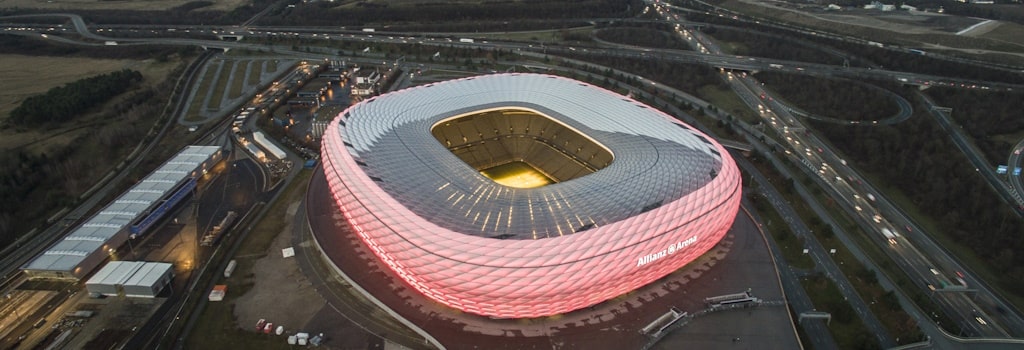

Ever wondered why massive eSports events like The International or IEM Cologne aren't hosted in football stadiums? With their huge fanbase, you'd think they could fill those massive venues, right? And let's just imagine the feeling of walking into the Allianz Arena in Munich - the colours alone would be amazing!
But here's the thing-it's not as simple as it seems. There are many reasons why eSports stick to indoor arenas rather than taking over those colossal football stadiums.
First things first-eSports is all about the screen. Whether it's Counter Strike: Global Offensive or Dota 2, the entire experience hinges on what's happening on those massive displays. Fans need to see every detail-the precise movements, the quick reactions, the tactical decisions. In a football stadium, even the biggest screens might not be enough to capture the details of a headshot in CS or a game-changing play in LoL. The farther you are, the more you miss, and let's face it-missing those key moments can be a real buzzkill.
Now, let's talk about the technical side. Football stadiums are designed for, well, football. They're perfect for a large field, plenty of seating, and loud cheering fans. But they aren't built to handle the high-tech needs of an eSports tournament. We're talking about an event that requires lightning-fast internet, state-of-the-art sound, and lighting that can change on a dime to match the action on the screens. Football stadiums just don't have the infrastructure to support this kind of setup. Sure, you could retrofit them, but that's a logistical nightmare-and incredibly expensive to boot.
Imagine trying to ensure perfect connectivity for thousands of fans, players, and broadcasters in a venue not designed for it. The cost and complexity of setting up the necessary tech in a football stadium would be astronomical. And if something goes wrong? Well, that could mean the difference between a smooth tournament and a disaster.
Let's face it-eSports fans want to be in the thick of the action. Imagine sitting in the upper tiers of a football stadium, trying to follow a complex game of Dota 2 or Counter-Strike. Not ideal, right? The beauty of eSports lies in the details. Watching those split-second decisions, seeing the players' expressions, and feeling the tension build. In a smaller, purpose-built arena, fans can get that up-close experience. Football stadiums, with their vast open spaces, just can't replicate that vibe.
Smaller venues create a more intimate experience, making fans feel like they're part of the action. They're close enough to see every move, hear every cheer, and feel the energy in the room. That's something a football stadium just can't offer.
Here's another thing to consider: comfort. eSports events aren't over in 90 minutes. They can stretch on for hours, even days. Now, picture sitting in a football stadium for that long, exposed to the elements. It could be scorching hot, freezing cold, or pouring rain. Not exactly the best way to enjoy your favourite game, right?
Indoor arenas offer a controlled environment where the focus stays on the game, not the weather. Fans stay comfortable, and nothing distracts from the main event. Plus, let's be real-people go to eSports events to watch the game, not to battle the weather.
Finally, let's talk about the money. Filling a football stadium is no small feat. While eSports has a massive online following, translating those numbers into in-person attendees is a different story. Football stadiums are huge, and filling them up for an eSports event would be a challenge. Then there's the cost-renting out a football stadium isn't cheap. And that's before you even start thinking about the costs of setting it up for an eSports event.
Plus, football stadiums are busy places. They've got their own packed schedules, with football games, concerts, and other events filling up the calendar. Finding a time to host an eSports tournament can be tough, especially if you need the venue for several days. It's just easier-and more economical-to stick to venues that are already set up for this kind of event.
So, while it might seem like a missed opportunity not to hold these huge eSports events in football stadiums, the truth is that venues like the Royal Arena in Copenhagen or the Staples Center in Los Angeles are just a better fit. They offer everything eSports needs to give fans the best experience possible.
Who knows? Maybe in the future, we'll see more venues that can handle both football and eSports. But for now, enjoy the action-wherever it happens!
An in-depth look at the biggest football attendances ever recorded, from the 1950 World Cup to pre-season friendlies in the States and the Scottish ground with dozens of 100,000+ attendances
All good things have to come to an end, and the same unfortunately has to be said for football stadiums too. This article looks at the grounds which are soon to host their last match, the stadiums whose days are numbered and where fans will be watching their football from next.
Taking my son to his first football match was one of the best experiences I've had as a father so far. I've written this article for Alex to read when he gets older.
23 interesting things to do to pass the time until the football season restarts
